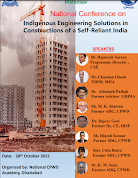Improving Urban Service Delivery with 3D Maps
The 3D Map feature in Excel allows us to quantify parameters with context to their location. In the figure, below the feature has been used to calculate the volume of water stored in a peri-urban lake.


The workbook may be downloaded by clicking here. The map shown above has been created using Excel Powermap feature, which is intuitive and self-explanatory. Python code requesting elevations from Google elevation api is available at http://aseempathak21.blogspot.com/. For the full context, methods and other mapping and measurement details for ecosystem services, you might refer to the PhD Thesis "Total Economic Valuation of ecosystem services provided by Soor Sarovar Bird Sanctuary".
The ability of a city government to effectively provide urban services through built infrastructure is heavily dependent on two key factors:
- Civil Engineering Competence: The technical expertise and capabilities of the city's civil engineering professionals (Including Architects, Structural Engineers, Project/Construction Managers etc. as defined in our National Building Code) are crucial in designing, constructing, and maintaining the infrastructure necessary for efficient service delivery.
- Availability of Georeferenced Data: Access to accurate, up-to-date, and spatially referenced data is essential for urban planners and decision-makers to make informed decisions and allocate resources effectively.
While there is no shortcut for enhancing Civil Engineering competency, the availability of relevant georeferenced data through Citizen Participation can provide quick relief. It can set the road to transparency, enabling all civic services including our built infrastructure.
Overcoming Siloed Departments
The traditional organizational structure of city governments, where different departments operate in isolation, often leads to inefficiencies and gaps in service delivery. This "siloed" approach can be overcome by:Promoting Data Co-Creation with Citizens
Encouraging citizens to actively participate in the data collection and sharing process can help bridge the information gap between the government and the community. By co-creating georeferenced data, citizens can provide valuable insights and real-time information that can complement the data held by the city's (and other governments) various departments. This collaborative approach would lead to a comprehensive understanding of the city's needs and challenges, ultimately improving the government's capacity to deliver urban services effectively.National Geospatial policy aims to dilute the boundaries between state and non-state actors. Typically, the government's geospatial projects run in isolation. For example, no data or project progress is available on NDMC's well-intended project to create a QR code for each tree in its area. Such projects can be developed and produced by school children and concerned citizens. The city governments can get such projects done through academia or an NGO in a low code no code environment as shown in the referred Excel workbook.
Everybody and all the government departments are stakeholders
Projects like the 'NDMC tree QR code' have cross-functional ramifications. Ownership of some government agencies is like continuing their siloed culture. For example, the traffic department needs to prune the trees hiding traffic lights, and the disaster manager needs to proactively prune or strengthen/ remove trees likely to fall in an impending storm. Bird life and air pollution collaborators would look at it differently. In fact, it would involve all services and service departments in many ways.
If restaurants and petrol pumps can be marked and traced by the citizens why can't trees, water bodies and other common eco-service assets?



This comment has been removed by the author.
ReplyDelete